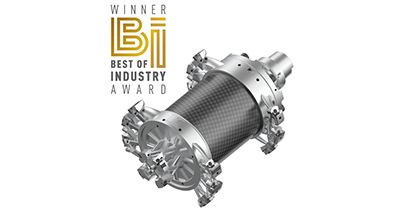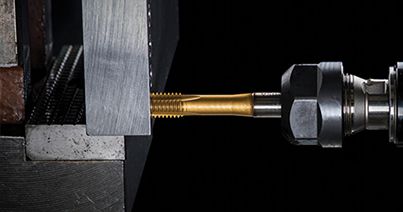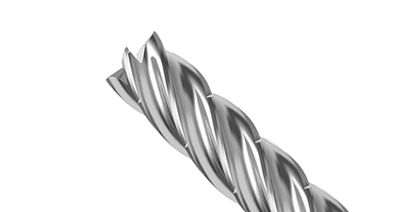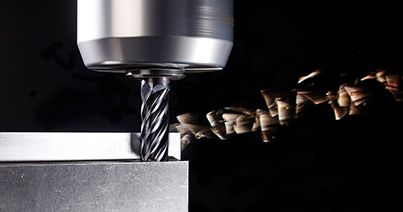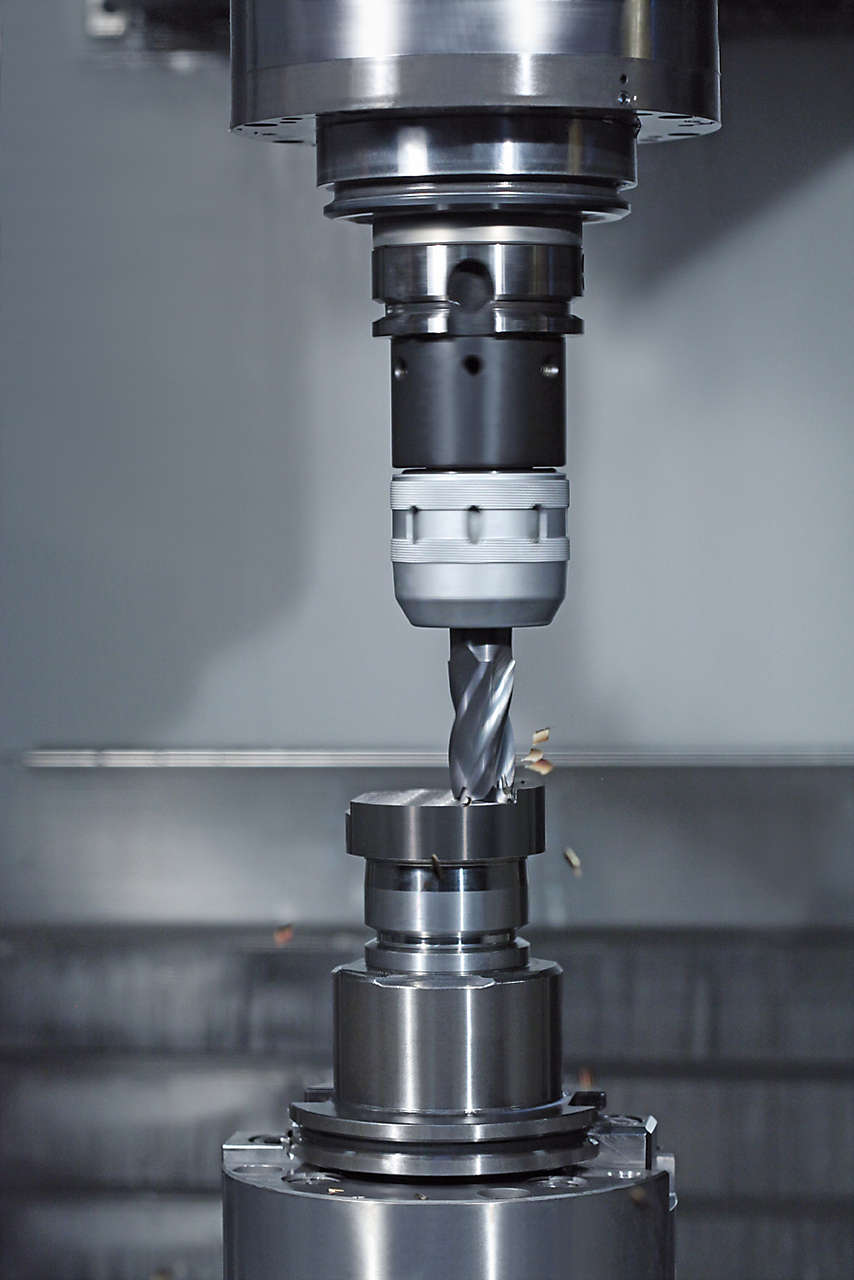
Making connections is essential within every industry. In the realm of metalworking, toolholders often provide the link between the machine and the cutting tool; creating the synergy necessary for optimal clamping performance when working a material. Here, we’ll explore some different types of tool holders and discuss the essentials you should know before choosing the right one for your operations.
Balance of Accuracy, Rigidity, and Versatility
Since toolholders securely hold the cutting tool in place and transfer power from the machine's spindle to the tool, you’ll always want to make sure there’s balance when machining. The balance of the toolholder makes sure everything stays properly in place. Toolholders have their own level of balance depending on the style of the adapter.
Some tool holders are balanced by design while others are not. The level of balance is calculated in grams. The more in balance the toolholder, the more consistent the wear pattern on the tool, which results in superior finishes and increased tool life.
To keep balance, your toolholders should have:
Accuracy: Tools should consistently produce workpieces with minimal deviations from the intended dimensions. Toolholders contribute to factors such as radial runout, concentricity, and axial alignment.
Rigidity: A rigid toolholder maintains stability during cutting, preventing tool deflection and chatter, preventing damage to the tool and workpiece. With high-quality toolholders, vibrations can be absorbed, and heavy-duty machining forces won’t take a toll on your tools.
Versatility: Toolholders with the capabilities of quick changeouts of various cutting tools can enhance productivity and reduce setup times. When adapters and chucks can be swapped out easily, they won’t need custom tool setups during complex machining. For example: KM™ quick-change toolholding systems offer flexibility without costly modifications.
Toolholder Tips You Should Know
Torque: One of the primary functions of a toolholder is to transmit torque from the machine's spindle to the cutting tool. Optimize your torque transmission and you’ll minimize energy loss and maximize power during machining.
Radial Runout: Also known as concentricity or Total Indicated Runout (T.I.R.,) is crucial for achieving precise machining results. Make sure your tools are in alignment, minimizing them from moving off-center of their axis.
Dampening: Toolholders with dampening capabilities absorb and dissipate vibrations during cutting which reduces chatter and improves surface finish. Unpredictable vibrations can lead to poor surface finish and damage your tools.
High-Speed Capabilities: Specialized toolholders engineered to handle high rotational speeds without compromising stability enable faster cutting rates without compromising accuracy. They ensure reliable performance at elevated RPMs.
Exploring Toolholders
Improving your machining performance with higher feeds and speeds contributes to increased productivity, but choosing the right toolholder plays a critical role in your success. Consider factors such as machine spindle type, cutting application, horsepower, thrust, material, and desired cutting parameters when selecting the appropriate toolholder.
Some standard and advanced toolholders include:
Hydraulic Chucks: Through hydraulic pressure to tighten the tool securely, hydraulic chucks are especially effective at dampening vibrations and absorbing cutting forces during machining. Hydraulic holders are well-suited for precision work and at high speeds. They can handle both roughing and finishing tasks with exceptional performance.
Kennametal’s HydroForce™: HydroForce is a hydraulic chuck that offers the highest accuracy, clamping forces, and provides excellent dampening qualities. The HydroForce technology minimizes runout, improves tool life, and enhances cutting performance. The shorter projection length and thicker front wall cross-section result in high rigidity. They can also be used for long-reach applications and narrow operating conditions.
Shrink Fit Holders: With high clamping forces, low tool deflection, and stability at longer tool lengths, shrink fit toolholders offer a good surface finish during higher feed milling applications. They are designed to grip the cutting tool through a process called thermal expansion. As the shank cools and contracts after being heated, it creates a powerful clamping force on the tool.
High-Performance Milling Chucks (HPMC) or Milling Chucks: Offering excellent rigidity and tool concentricity for heavy-duty and high-performance jobs, milling chucks use a sleeve or end mill reducer holder to secure the tool in place. They offer superior gripping force and vibration dampening, resulting in enhanced surface finishes and increased metal removal.
ER Collets: Widely used for holding round shank cutting tools, ER Collets are known for their good gripping strength and flexibility for light-medium duty drilling, milling, and tapping. They are available in different sizes and can be identified with codes such as ER32 or ER40, which corresponds with their system size.
Whether you choose traditional options like ER collet chucks and milling chucks or advanced toolholding technologies like shrink fit holders, hydraulic holders, or Kennametal’s HydroForce, investing in high-quality toolholders will undoubtedly enhance your machining processes and lead to superior outcomes.
Understanding the Spindle
The spindle is an essential component of any machining center. It holds the toolholder and rotates the cutting tool at high speeds. When choosing a toolholder, compatibility with your machine's spindle and specifications are vital.
Several types of spindle connections exist, with the most common ones being:
Steep taper connections such CAT and BT styles are popular connection types that use a flange and retention knob for secure attachment. CAT (V-flange) is more prevalent in the United States, while BT (MAS) is widely used in Asia and Europe. These connections offer high rigidity and are common in milling and machining centers.
Taper-face steep taper connection types such as CVKV are similar to CAT and BT styles but are more rigid and can be run faster. They feature tapers and have better face contact with the spindle surface to maintain accuracy.
HSK (Hollow Shank Taper) offers an advanced spindle connection system designed for high-speed machining and complex milling operations. It features a hollow shank and a set of clamping segments that provide excellent stability, balance, and concentricity.
Tool End Connections
The tool end connection refers to the interface between the cutting tool and the toolholder. The two most common types are:
Straight shanks which are designed with a uniform diameter throughout the length and are commonly used with collet systems. They are suitable for light to medium-duty applications and are often used with drills, reamers, and taps.
Weldon shanks which are designed with a flat surface on one side of the tool shank, allowing for a better grip and enhanced torque transfer. They are widely used for milling cutters and other end mills, offering stability during heavy-duty cutting tasks.
Summary
Choosing the right toolholder is critical for achieving precise and efficient machining results. Always prioritize safety, precision, and compatibility with your machine and cutting tools to ensure optimal performance and longevity.
For more information on Kennametal’s HydroForce or toolholders and their components, contact one of our experts. For additional information on toolholder maintenance, please visit our blog on Essentials Tips on Toolholder Maintenance.
Quick Tips: Maintenance
Store tools in the proper box, cart, drawer, or locker
Cleaned adapter, bores, collets, and spindles after each usage
Watch for dents, scars, or signs of excessive wear
Do not store in chucks in clamped positions
Related Articles
- Printing the Future of E-Vehicle Manufacturing... TodayKennametal's stator bore tool leverages the design and flexibility of additive manufacturing for machining EV components. Learn more.Kennametal's stator bore tool leverages the design and flexibility of additive manufacturing for machining EV components. Learn more.
- Different Types of Thread TapsLearn about the different types of thread taps and how to choose the right one for your operation. Discover basic tips for using thread taps effectively.Learn about the different types of thread taps and how to choose the right one for your operation. Discover basic tips for using thread taps effectively.
- KOR™5 DA: How to Make Aluminum (Chips) FlyKennametal’s KOR5 DA solid end mill has high feed rates & MRR. Meet the engineers who worked on the design, and learn how to cut aluminum like a king!Kennametal’s KOR5 DA solid end mill has high feed rates & MRR. Meet the engineers who worked on the design, and learn how to cut aluminum like a king!
